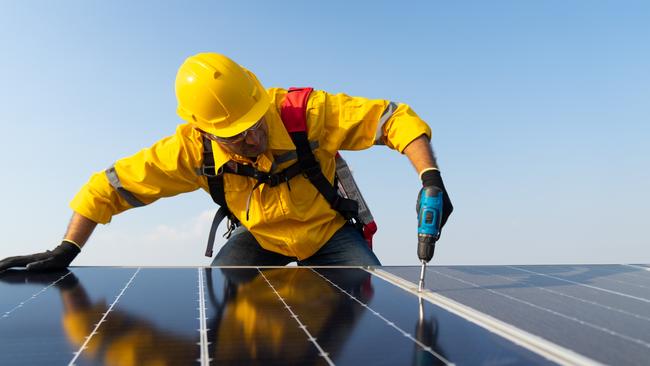Explained: How a sun tax will impact solar customers in 2025
Queensland solar users will be hit with a “sun tax” from July 2025, with experts explaining what it means, the impact on power bills and how you can come out on top.

QLD News
Don't miss out on the headlines from QLD News. Followed categories will be added to My News.
Queenslanders are being urged to review their solar plan amid an ongoing energy crisis and looming “sun tax”.
Clean Energy Council director of distributed energy Darren Gladman said “most solar customers still purchase some electricity from the grid so if electricity prices rise, they will be affected by that”.
He said the increase in wholesale electricity prices will (eventually) lead to an increase in the feed-in tariff (FiT).
“This will make solar an even more financially attractive option in future, once the electricity prices increases have flowed through to consumers,” Mr Gladman said.
The so-called sun tax could see some solar panel owners charged for exporting electricity back into the grid from July 2025.
What is a sun tax?
The sun tax is a controversial plan passed by the Australian Energy Market Commission (AEMC) that will see demand-based pricing introduced for solar panel owners who export electricity back to the grid from July 2025.

While electricity retailers currently pay customers with solar panels to send electricity back to the grid, the new plan will also see customers charged at certain times, with some labelling the two-way pricing, a “sun tax”.
The AER has released draft export tariff guidelines, shedding light on what customers could expect when two-way pricing comes into effect.
Why do we need a sun tax?
Australia has the fastest rate of solar take-up globally, with solar panels and batteries expected to double within the next decade, according to the AEMC.
The hope is that two-way pricing will create more room on the electricity grid by encouraging Australians to use the solar power they generate or store it in batteries and export it when it’s needed the most.
Two-way pricing should also prevent export bans some customers face and ensure renewable energy doesn’t go to waste.

Compare the Market’s Energy expert and general manager of utilities, Brett Mifsud, said while the plan may seem unfair to some solar panel owners, there will be many benefits to customers.
“Encouraging customers to export electricity at different times improves the flow of energy entering and leaving the network,” Mr Mifsud said.
“Some funds from export charges will also help develop new technologies that will benefit customers, networks and the environment.
“The AER also approves all export tariffs, which must benefit customers and enhance the network.”
How will a sun tax impact my power bill?
The AEMC and Australian Energy Regulator (AER) have confirmed that a free exporting option will remain for households who don’t want to be charged for exporting their solar energy to the electricity grid.
Under a basic export level, customers will still have an option to export electricity to the grid for free, providing they meet the criteria outlined by their distributor or retailer.
But Mr Mifsud said customers could earn more for exporting when “demand is high”.
“Customers will still have an option to export a certain amount of solar energy to the grid for free, but essentially, customers could earn more for exporting when demand is high and less when demand is low or supply is high,” he said.
“There’s also a chance retailers could charge customers to export during lower demand but higher supply times.
“Homes that are equipped with solar storage systems or batteries will have more choice when they export electricity to the grid, meaning they could maximise the amount they earn.”
The draft export tariff guidelines suggest this option will be available for a 10-year period from when the two-way pricing model comes into effect from July 1, 2025 for most states.



